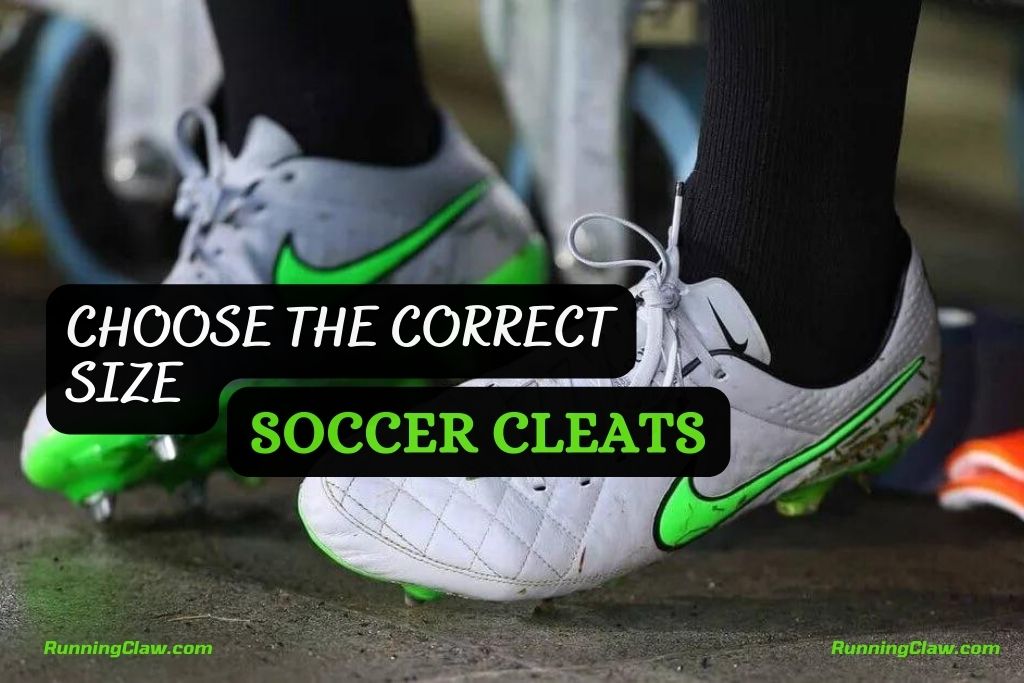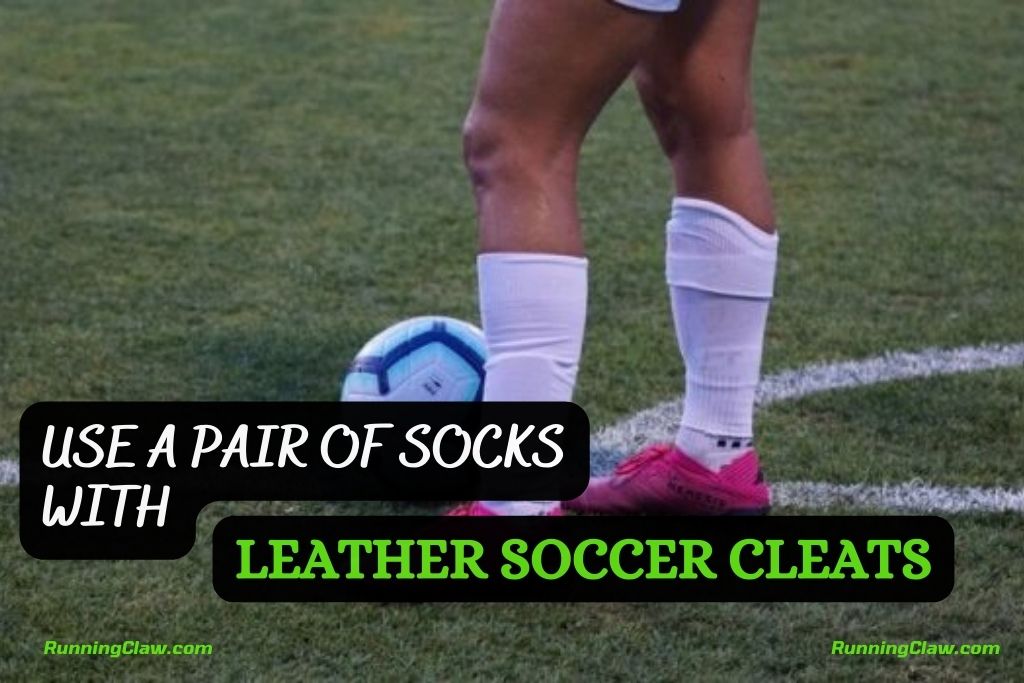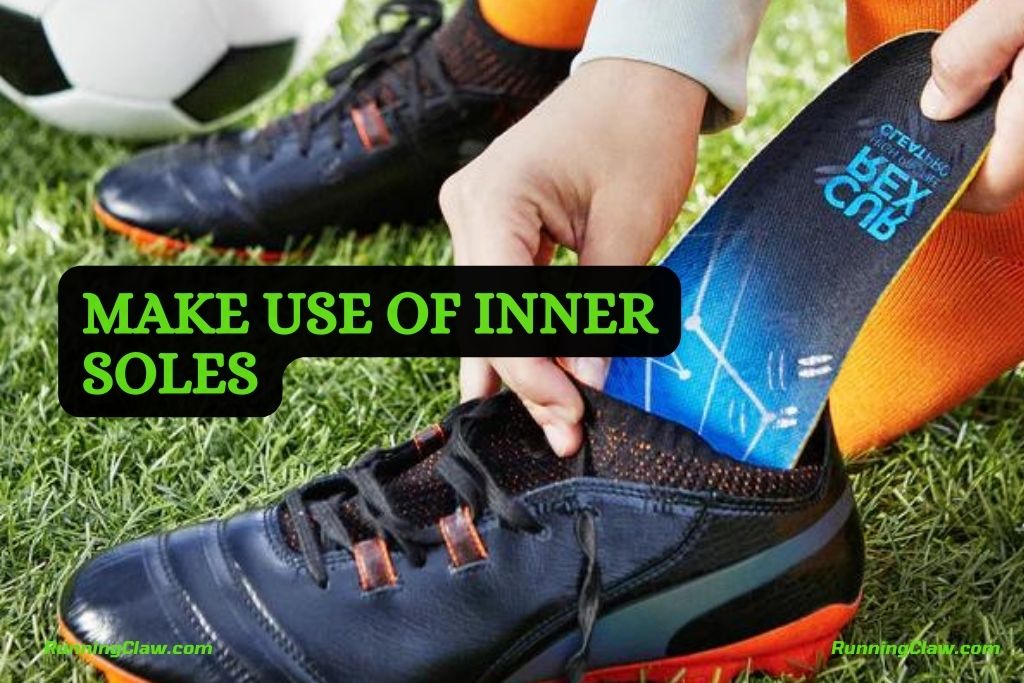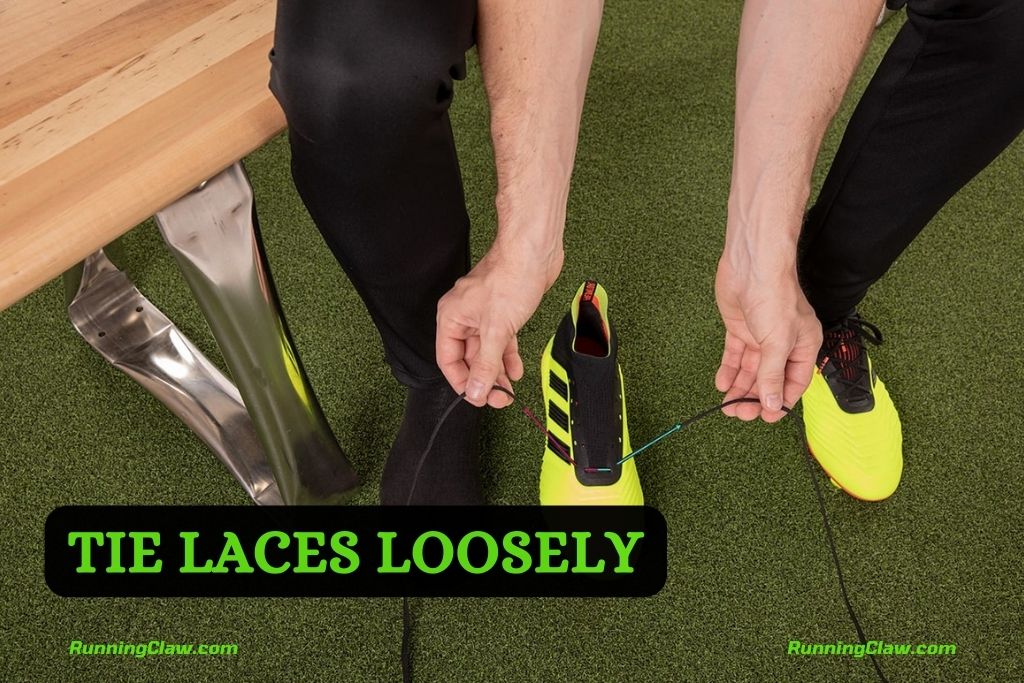Indeed, getting new shoes make you happy. As a soccer player when you purchase your leather cleats, you always consider comfortability other than size, color, and design.
But sometimes you have to make your soccer cleats comfortable in your way, and it is like making them your best friend.
After long-term use, breaking in new soccer cleats ensures that the cleats leave your foot blister free and feel easy.
There are many ways you can break into your cleats to play soccer. And we will explain the different strategies with them so you can get over the easiness of your soccer cleats.
Following this article’s steps, you can confirm that your new soccer cleats give you maximum enjoyment. Your soccer cleats are with you in good and bad times.
Do You Need to Break in Leather Soccer Cleats?

When you buy new leather soccer cleats, selecting the proper size is essential and a good step.
Your feet will suffer if you buy cleats that are too short and too big. Your ankles are easily injured if you get too loose a pair of soccer cleats.
Too tight a pair of soccer cleats can not cause severe injuries, but they can be very uncomfortable to your toes and blister-prone areas of your feet.
Soccer players know that soccer cleats are essential to your task. Choose the new pair of soccer cleats wisely. They should be tight enough and tight enough.
With experience, you can select the right size of soccer cleats. You should have little movement overall and be able to wiggle your toes.
After choosing the right size, when you wear the new soccer cleats, you do not face any problems.
Mostly, the painful blister is the main issue with new cleats. This issue is concluded using the breaking-in process.
The majority of soccer cleats depend upon the player to break them in.
Suppose you select the correct size of shoes. Players who find themselves wrecked with these cleats do not need to worry.
Tips to Break in Leather Soccer Cleats – Have A Closer Look

The process of breaking into soccer cleats is quite simple. With these steps, you will set yourself up for success.
- Researching for Soccer Cleats
- Choose the Correct size Soccer Cleats
- Use a pair of socks with Soccer Cleats
- Make Use of Inner soles
- Tie Laces Loosely
- Use of petroleum jelly for friction Reduction
- Stuffing Newspapers and Drying Them
- Practice To Make Your Cleats Comfortable
- Make Your Cleats Tight with some Technique
- After Making them Fit For Your Feet Enjoy Your Cleats
Suppose you have ever made your soccer cleats comfortable for you. You can also share your experience with us in a comment section.
Here you go with the explanation of these tips:
1. Researching for Soccer Cleats

Researching new soccer cleats is the first step to buying new soccer cleats. You find relevant information by using the internet.
You get the best information about body quality, sizing, and long-term usage on the internet.
However, we read the process of breaking in your new soccer cleats.
2. Choose the Correct size Soccer Cleats.

It is essential to ensure that the new soccer cleats match your expectations. When selecting your cleats, always pay attention to the correct size.
All brands follow different sizes and shape guides. Unfortunately, some cleats do not contain foot shapes. You buy cleats that can control the ball and have the ability to kick the ball.
Selection of the right size is the crucial step. Wear cleats half-size smaller than sneakers. You feel tight skin but allow the wiggle for your toes.
3. Use a pair of Socks with Leather Soccer Cleats.

When you are breaking in the cleats, wearing socks is essential. The socks cushion the feet and play what you will wear when playing.
Wear an extra pair of socks beneath to help spread them out if your cleats are too tight.
Compression socks are an important choice for your base layer. The extra pressure promotes high oxygen blood flow to the feet and legs, censorious inflammation, and achy pain. The extra grip reduces friction and prevents chafing and blistering.
4. Make Use of Inner soles.

Insoles give the base of your shoes an effect on your foot, allowing cleats to mold themselves according to the foot shape. When it boils, your new soles are molded. It is the chief goal of breaking in new cleats.
Orthopedic insoles fit your feet thoroughly. The breaking in cleats depends on the material of the cleats. After a week, you exchange their soles again if you replace the old soles with new cleats. The heel and arch are comfortable.
Good insoles have a large number of long-term benefits. They are transferable to different types of footwear. Good insoles have attractive prices. During practices and games, protect your feet from the constant pounding. It also acts as a shock absorber.
5. Tie Laces Loosely

Lacing up your soccer cleats also depends on breaking in cleats. It makes you more comfortable with your cleats. Loosely tied off the laces of your cleats, you feel comfortable.
You avoid discomfort, and you will want to change up your lacing system. If you have laces cleats, you need to tighten or loosen the laces of your cleats. Laceless cleats are easier than lace cleats.
6. Use of Petroleum Jelly for Friction Reduction

Removing friction is also included in the process of breaking in cleats. Friction is reduced by using petroleum jelly Vaseline.
Many players use a thin layer of Vaseline when broken in their new cleats. Blisters are caused by dry rubbing.
Cleats are made with polymers and leather. Vaseline avoids dry rubbing. By using Vaseline, we make our cleats soft and slicker. The deodorant also removes the smell.
7. Stuffing Newspapers and Drying Them

This step can also make your cleats comfortable for you. You just take your cleats and bring them full of newspapers. They dry and maintain their shape.
You would feel good placing your cleats in sunlight as direct sunlight can damage the leather. We do not dry them in direct sunlight because it cracks and dries the leather.
So, use newspapers. It keeps safe your soccer cleats and makes them more accessible for you.
8. Practice To Make Your Cleats Comfortable

We should take a week of practice to make our cleats perfectly and molded to our feet.
After that, wear your cleats for three consecutive days, just enough to get a grip on your shoes.
Or you can practice for a day for about 20-30 minutes. It also depends on your routine.
9. Make Your Cleats Tight with Some Technique

If, after practice for one week, your cleats are still tight. You need to know about the cold water technique.
Just pour cold water into your cleats; use only cold water because hot water can damage the surface of your cleats.
After adding water, wear wet soccer cleats and now practice with them. You will feel an expanded area inside your soccer cleats.
10. After Making them Fit For Your Feet Enjoy Your Cleats

The last step is to enjoy it. The following steps help maintain style and comfort. Break in soccer cleats and practice like juking out the opponent, handling the ball, and shooting back to the net.
Conclusion:
For the best way to break in soccer cleats, you need to know the importance of ease while playing. So, you can make your soccer cleats more comfortable with easy steps, including practice before playing. The comfort of shoes helps to maintain your cleats for a long time, are blister-free, and perform well every time.
You may also like:
- Cleats that Famous Football Players Wear
- Can You Use Turf Cleats for Indoor?
- Can You Wear Softball Cleats For Field Hockey?
- How to dry Soccer cleats?
- Can You Wear Metal Cleats on Turf?
- Do Wide Receivers Wear Soccer Cleats?
- Do Nike Cleats Run Small?
- Difference Between Soccer and Baseball Cleats
- Difference between Football Cleats and Soccer Cleats


